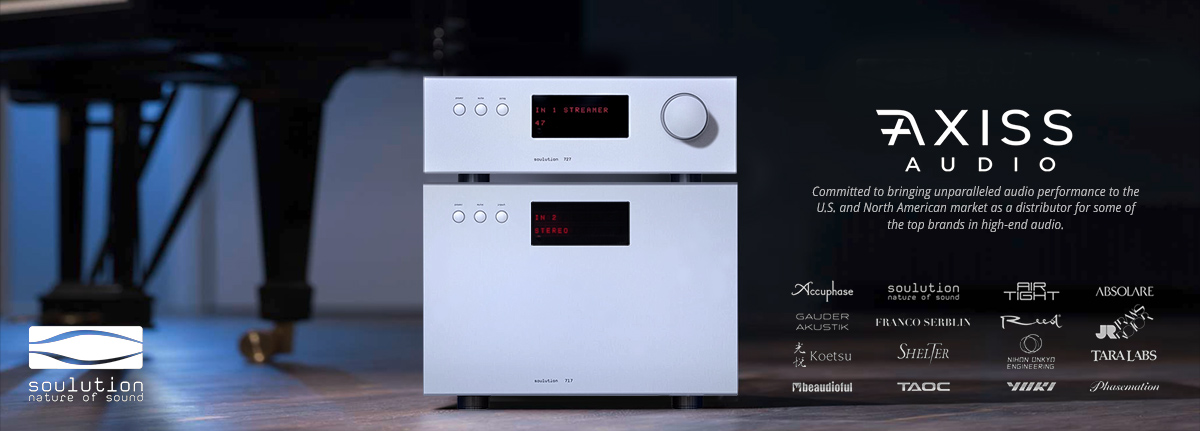JA said Fremer may not hear it because he was only using a few watts. I took that to believe he felt it was audible on regular speakers.
I've owned no NFB amps, both tube and ss. What Brad is peddling isn't always true and I feel he is (extraordinarily) biased to the point of finding pseudo science (ie. Cheever's master thesis comparing a Hafler and diy 1.5 SET amp) to support his claims while ignoring others (Nelson Pass for one). My favorite amps on 101db Zu speakers were Quad Jubilees or Forties, Valvet Class A monos, and Dartzeel. And every SET amp under 20 watts wasn't enough power and had crappy bass or such boosted 2nd harmonic that I was hearing distortion. The irony is that I'm not anti-SET actually - in fact have been eyeing a Solista to scratch a long-term itch - but putting them on inefficient speakers is a recipe for disaster and belies the entire SET point. So when I see JA confirm measurements for this SS amp that is meant to drive inefficient speakers, I fail to see the point.
Curiously enough, I now have a Ref 75SE on my current Devores Gibbon Xs which SET fans who have visited my room love. Go figure?
I am not peddling anything and there is no pseudo-science behind my discussions...please feel free to be specific enough to have a proper debate,. I have been quite specific, siting findings from a number of sources, including Pass, Cheever, Boyk and Sussmann, Crowhurst, Geddes and others. Do you even know I am saying to say that it is or isn't true? Do you? What is pseudo-scientific in comparing to extremes of amplification? If you want to map out the boudaries of a scientific problem this is often exactly how you do it. One that objectively measures very poorly and one that objectively measures very good to test the hypothesis that your metric, which says the objectively poor measuring one sounds better to a collection of people, more accurately predicts this than standard THD and IMD measurements. While this is not a conclusive study, it he did not invalidate his hypothesis that the amp that stays closest to his definition of aural harmonics will be the better sounding amp to MOST people. The results are consistent (if not exactly) with other engineers and scientists who have thought about this issue of correlating sound quality with measurements.
Specifically, which claim from Pass am I ignoring? His anecdote that some people prefer 3rd harmonic to 2nd harmonic? Something else? He has his opinion based on experience but it is not a fact borne out by controlled studies. He might be right or there might be something more hidden behind. I agree with a lot of what he says regarding distortion and how it builds up in circuits (particularly IMD). BTW, none of this contradicts Cheever.
I am almost certain that what you were hearing was not 2nd order distortion. More likely transformer saturation. I do not advocate using low powered SETs on unfriendly speakers and the truth is that a lot of SETs have design deficiencies (like too small output transformers...that's the most common one I would say) to save costs, because although the designs are relatively simple, the parts costs are high...if you want to do it right. A good 30 watt SET can get very satisfactory results on a 90db speaker. FWIW, I run my SETs primarily on horns or other high sensitivity, SET friendly speakers and I have never owned one that was less than 20 watts. Your over dramatizing the "disaster" of putting a moderate powered SET on normal speaker is grossly overblown and tells me that you never really tried it. It does not belie the point that most listening, even on a 90db speaker, is with 1 watt or less and the naturalness of a SET can still easily shine through, particularly the 3d presence and microdynamic liveness.
If you look at this amps measurements, it can produce several hundred watts into 2ohms with less than 1% THD, which is primarily low order harmonics...will you hear this when the amp is close to clipping? Hell no. At normal levels, where there is only few watts peak, the distortion is much lower and quite benign overall. Not sure why this can't drive difficult speakers successfully... please explain why you think so. Ironically, a lot of big speakers that this amp would be used with are MORE sensitive than the smaller siblings in their lineups...this is true for Wilson and for Focal and probably many other brands...bigger drivers are usually more sensitive not less sensitive.
Cheever correctly points out that the sensitivity to distortion decreases as the SPL increases...it is SPL dependent. That is why distortion increasing with power is not a problem at all as long as that distortion character remains constant and primarily low order. It seems that the Hyperion is fitting this ok.
Please be specific as to what no NFB amps you have owned.
Scratch that SET itch by all means...just make sure you choose wisely and don't put them on a 83db Vandersteen or similar... for a 20 watt SET I have found that 90db and up works fine in a moderate sized room sitting 3-4 meters away.
I have heard the latest Audio Research stuff at a local dealers several times now...not impressed so far...
















